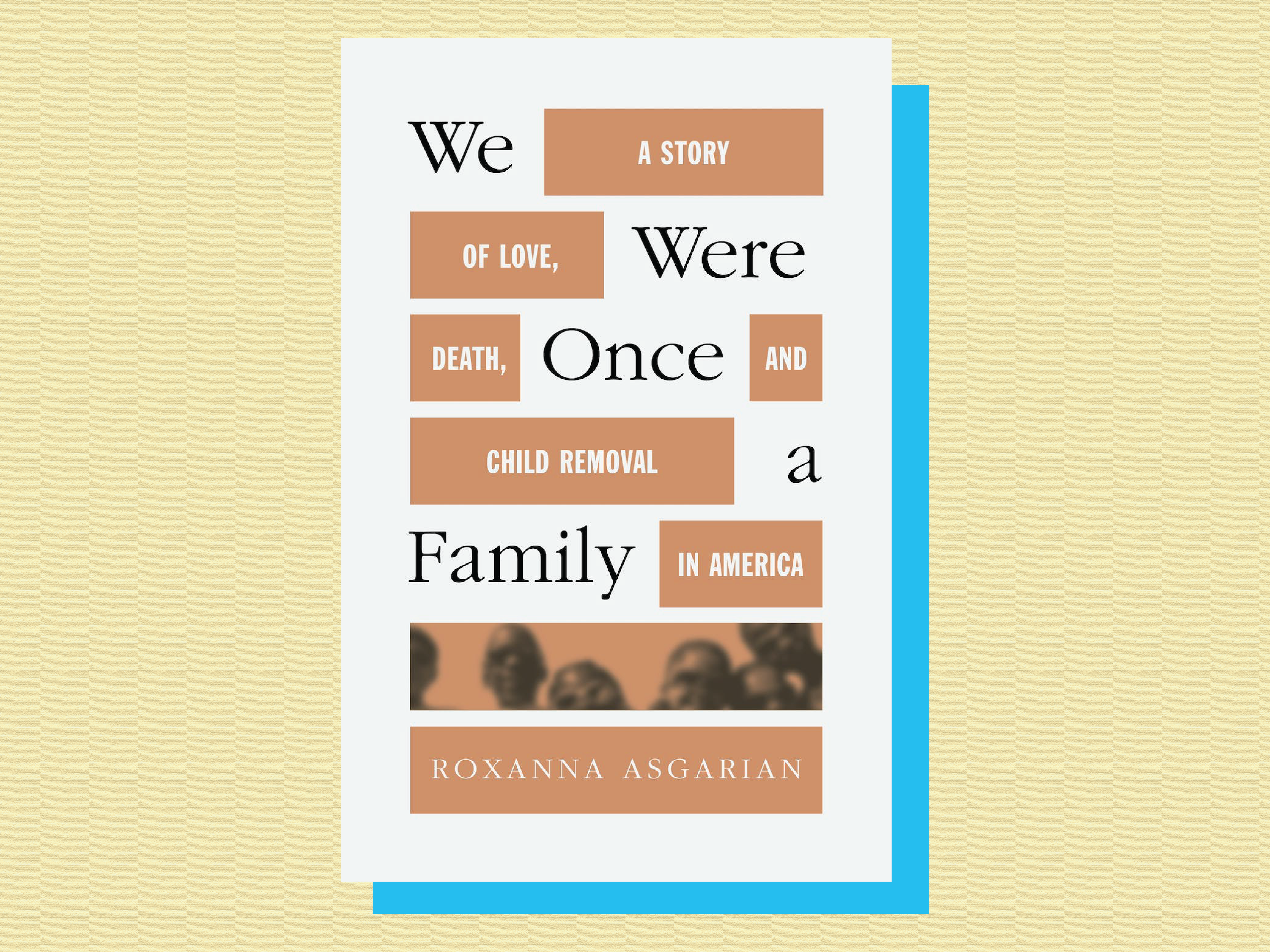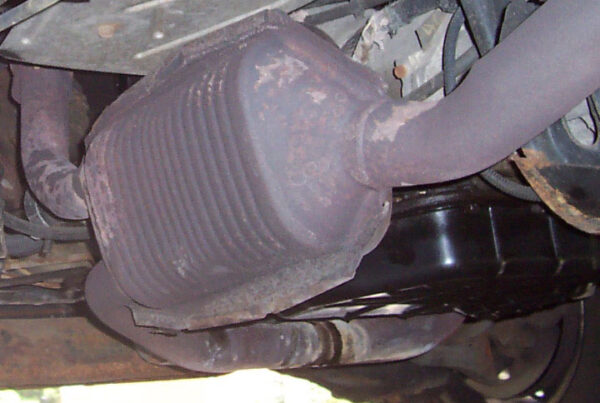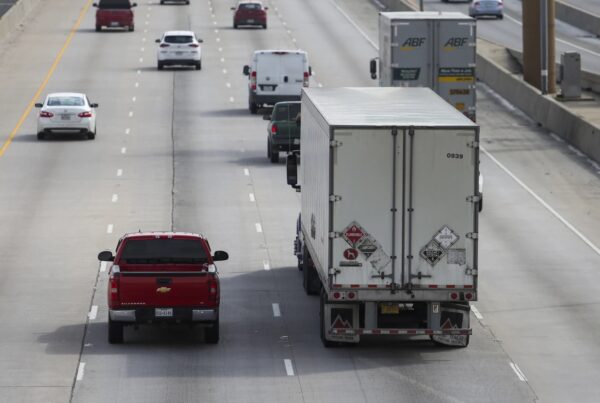In 2018, a married couple drove an SUV with six children off a cliff in California.
The couple, two white women, both 38, had adopted six Black children, aged 12 to 19, from two separate sibling groups. All the kids were from Texas.
Law enforcement ruled the crash was not an accident.
Roxanna Asgarian, who covers courts for the Texas Tribune, has been working to uncover the stories of these children and their birth families for the last five years. Her reporting appears in a new book, “We Were Once a Family: A Story of Love, Death, and Child Removal in America,” which was published in March.
Asgarian said three of the kids came from Houston and three came from the Corpus Christi area.
“They were teenagers at the time of their deaths and not very much is actually known from their perspective of their time with the Hart women, because they were so mediated by Jennifer Hart’s social media posts and her sort of the way that she painted the family in their lives.”
Listen to the full interview with Asgarian above or read the transcript below.
This transcript has been edited lightly for clarity:
Texas Standard: Jennifer Hart, that’s one of the adoptive moms?
Roxanna Asgarian: Yes, that’s right.
What were they presenting about their family, exactly? And how different was that from the truth?
She had a very large following on Facebook. She was she was a photographer by hobby. And so it was a lot of these very well-lit photographs of her smiling children and talking about their multicultural family and their vegetarian lifestyle. They raised chickens. They went on vacation. So I think she tried hard to showcase a very kind of manicured idea of an ideal family. But, you know, the kids were pulled from public school after Sarah Hart was charged and pled guilty to abuse. So some of this stuff that was showcased as a very free wheeling family was really covering up very alarming actions by the women.
And so it may be understandable because of that presence or that presentation that a lot of the media coverage was focused on “why did this happen?” And your question, it seems, goes back even further, which is why were these children put in that situation? Is that fair?
Yes, for sure. Because I think the state has a big role when they remove kids from their homes to ensure that they’re safe. And I think that we remove a lot of kids from their homes without ensuring they’re safe, especially when they’re adopted across state lines.
What did you find when you started looking into their birth families?
You know, I originally got a breaking news assignment, which is how I started going down this road of what ended up being the book. And I realized that the birth families were struggling with poverty. One of the birth mothers had a drug problem. The other one was struggling with housing instability and mental illness. But there were no actual abuse allegations made against the moms to their kids. This was more issues of poverty and neglect.
Why did you feel it was important to trace their lives before their adoption and center the experiences of their birth families?
Yeah, I thought that most of the stories about the Hart family focused on the white women who adopted the kids and what their psychological motivations might have been. And I felt that it did a disservice to understanding who the children were by not looking into their upbringings in their lives before they came to be adopted. So I felt like that was a piece of the story that wasn’t being told, that told a much deeper story about the effects of the child welfare system.
Do you mind connecting the dots? What do you think the lessons are from this story about the child welfare system?
I think that the birth families were clearly treated in a very different way than the adoptive mothers as this case played out. Like I said, that the birth families were charged with neglect, which can often be confused with poverty. And the adoptive mothers were investigated several times for very alarming issues of malnutrition and underfeeding their children. They, one of the moms, pled guilty to domestic abuse for bruises on one of the kids. So these were definitely really alarming issues, yet they never were removed from the adoptive home.
Given that these kids moved several states and ultimately died in California – they were from Texas – do you think this is a Texas story or a national story? Who should be paying attention and learning from these lessons?
I think it’s both. I think Texas had a huge hand in this story because all of the kids were from here and the state of Texas was responsible for them. And, you know, sending them to Minnesota in the first place was kind of what got this ball rolling. But I do think that this story really points out the issues in the child welfare system nationally, because it’s a patchwork system of a bunch of different agencies that don’t communicate well with each other. And I think this story really showcased how many things went wrong in all the different spots that it happened. And I think that that, you know, makes a good case for just how troubled the system actually is.
I mean, that seems like a pretty basic recommendation, that communication between systems across states is a lesson to be learned from this. Are there any other that stick out to you?
Yes, I think that, at the very first piece, that we remove too many kids from family homes that could be better supported with monetary and other supports that aren’t predicated on punishing their parents. Three of the kids in this family had family members who wanted to adopt them. And there were issues with you know, there were like the aunt. She had asked the mom to babysit one time because she needed to go to work and she couldn’t find child care. And that was the reason that the kids were removed from their aunt, was because her lack of child care. So I feel like there are plenty of ways that we can support families to keep their children in their homes that aren’t so punitive.
This happened in 2018, the event resulting in the deaths of these six children. Have any changes been made since then that that you can see?
There have been some changes. None directly related to this case. There was a pretty appalling lack of accountability on the part of Texas and other states involved, I think. But Texas has done a couple of things that have made a difference. Last legislative session in 2021, the Legislature restricted the definition of neglect to make it harder to remove kids from homes where poverty is the main issue.
Asgarian will talk about her new book at a conversations with The Texas Tribune event on April 13.














